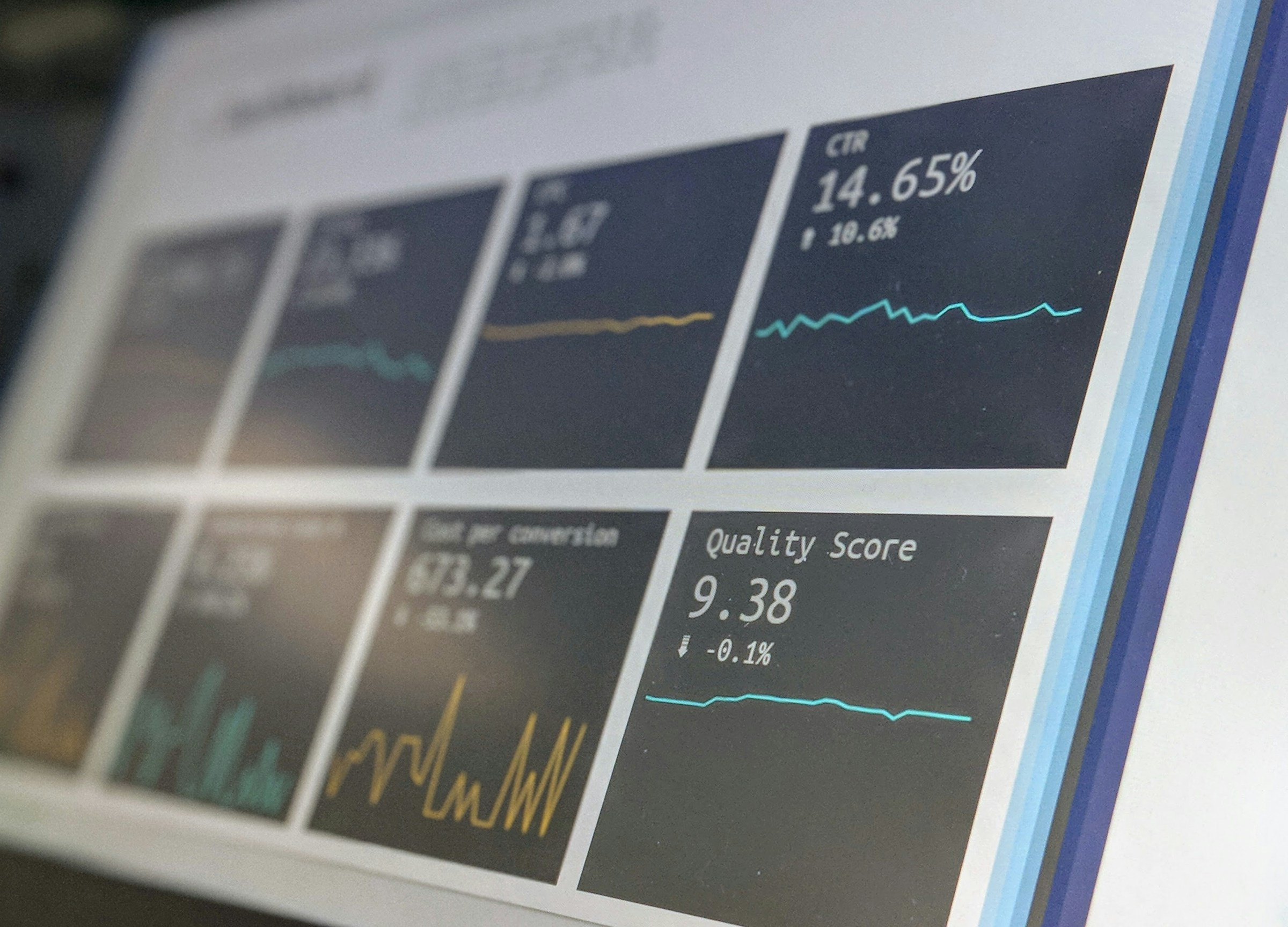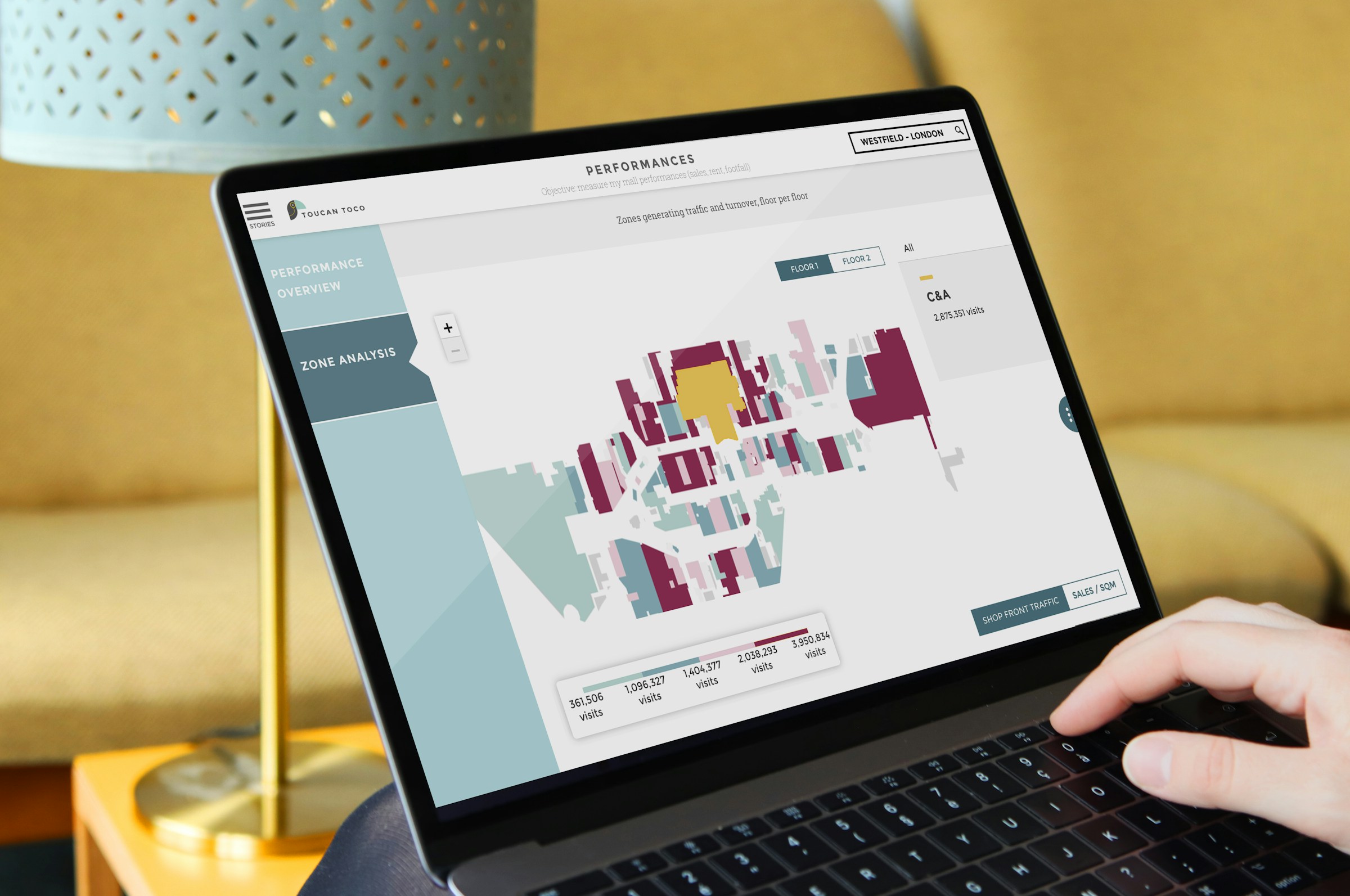The journey to mastering omnichannel customer experience can be overwhelming for businesses aiming to seamlessly integrate data from multiple channels for a comprehensive view of customer interactions. In this article, we will explore the key benefits of omnichannel reporting for businesses, how it works, and more to help you navigate the complexities of this vital process effectively.
Rengage's omnichannel marketing platform is a valuable solution that can help you achieve your objectives, such as learning about the key benefits of omnichannel reporting for businesses, how it works and more.
Table of Contents
- What is Omnichannel Reporting?
- Importance of Omnichannel Reporting
- Why Omnichannel Reporting Matters in 2024?
- The Need for Omnichannel Reporting in Business
- 6 Key Benefits of Omnichannel Reporting
- Steps to Implement Omnichannel Reporting
- Challenges and Solutions of Omnichannel Reporting
- Create Personalized Experiences That Drive Loyalty and Growth with Rengage's Omnichannel Marketing Platform
What is Omnichannel Reporting?

Omnichannel reporting is like having a superpower that allows you to see everything your customers do across all the different ways they interact with your business. It's the ultimate detective tool that helps you uncover hidden patterns and insights that you wouldn't see if you only looked at bits and pieces of the puzzle.
Imagine being able to connect the dots between a customer scrolling through:
- Your social media feed
- Browsing your website
- Stepping into your physical store
- Hitting that buy button on your mobile app
Omnichannel reporting provides a complete picture of customer engagement with your brand.
The Foundation of Omnichannel Reporting
Omnichannel reporting combines data from various sources into one big, cohesive system. It's like creating a master file that captures every step of the customer journey, even if they jump from one channel to another without missing a beat. This seamless integration is essential today, where customers effortlessly switch between digital and physical touchpoints to connect with brands.
Uncovering Customer Insights through Omnichannel Data
The beauty of omnichannel reporting lies in its ability to dive deeply into customer behavior. By pulling data from different touchpoints, businesses can spot trends and habits that would otherwise remain hidden. This panoramic view helps businesses pinpoint pivotal moments in the customer journey, such as:
- When a customer moves from casually browsing to seriously considering a purchase.
- Helps identify any bumps in the road that customers encounter along the way, paving the path for targeted improvements that boost satisfaction
- Keep customers coming back for more
Driving Personalized Experiences with Omnichannel Reporting
Omnichannel reporting also powers personalized marketing and engagement strategies. Armed with a 360-degree view of customer interactions, businesses can slice and dice their audience to create tailored messages that hit the mark.
For instance, if your omnichannel report reveals that a specific group of customers loves shopping online but prefers picking up orders in-store, you can create marketing campaigns spotlighting this convenient option. This targeted approach drives sales and builds a deeper bond with your customers based on their unique preferences.
Related Reading
- Omnichannel CRM
- Omnichannel Marketing Tools
- Omnichannel eCommerce
- Omnichannel Marketing Strategy
- Omnichannel Personalization
- Omni Channel Marketing Examples
- Omni Channel Customer Engagement
- Omnichannel Marketing Automation
- Multichannel Marketing Automation
- Marketing Automation ROI
Importance of Omnichannel Reporting

Comprehensive Customer Insights
Integrating multiple channels into a single reporting system allows businesses to gather and analyze data from various touchpoints, such as:
- Online interactions
- In-store purchases
- Social media engagements
This comprehensive view of customer behavior provides valuable insights into preferences, buying patterns, and pain points. By understanding the complete customer journey, businesses can tailor their strategies to meet customer needs more effectively.
For instance, a retail brand can analyze data and identify trends in customer purchases from their:
- E-commerce site
- Social media platforms
- Physical stores
This analysis can reveal which products are prevalent across different channels and help the brand optimize inventory and marketing strategies accordingly.
Enhanced Decision-Making
A unified reporting system enables businesses to make data-driven decisions based on a holistic view of their operations. When data from various channels is aggregated, it eliminates silos and allows for a more accurate analysis of performance metrics. This integration can lead to better strategic planning and resource allocation.
For example, if a company notices a decline in sales through a specific channel, they can quickly investigate the underlying causes by analyzing data from all relevant sources. This timely insight allows for swift action, whether it’s adjusting marketing efforts or addressing operational issues.
Improved Customer Experience
A seamless omnichannel experience is essential for customer satisfaction. By integrating multiple channels into a single reporting system, businesses can ensure that customers receive consistent messaging and service across all touchpoints. This consistency builds trust and loyalty, as customers feel valued and understood.
For instance, if a customer engages with a brand on social media and then visits the website, they should encounter a cohesive experience that reflects their previous interactions. Integrated reporting helps businesses track these interactions and ensure that customer service representatives have access to relevant information, enabling them to provide personalized support.
Streamlined Operations
Integrating reporting systems can significantly streamline operations by automating data collection and analysis processes. This automation reduces the need for manual data entry and minimizes the risk of errors, allowing teams to focus on more strategic tasks.
With a centralized reporting system, businesses can generate real-time reports that provide insights into:
- Sales performance
- Marketing effectiveness
- Customer engagement
This efficiency saves time and enhances team collaboration, as everyone can access the same data and insights.
Better Marketing Strategies
A unified reporting system allows businesses to evaluate the effectiveness of their marketing campaigns across different channels. By analyzing data from email marketing, social media, and online advertising in one place, companies can identify which strategies yield the best results.
For example, integrated reporting can help determine which channel drove the most conversions if a business runs a promotional campaign across multiple channels. This insight enables marketers to allocate budgets more effectively and refine their strategies for future campaigns.
Increased Agility
In today’s business environment, agility is crucial. Integrating multiple channels into a single reporting system allows businesses to respond quickly to market changes and customer feedback. With real-time data at their fingertips, companies can make informed decisions and pivot their strategies as needed.
For instance, a brand receiving negative feedback about a product on social media can quickly analyze sales data and customer interactions to assess the situation. This agility enables businesses to address issues proactively and maintain a positive brand image.
Enhanced Performance Measurement
A unified reporting system allows businesses to measure performance across all channels effectively. Establishing key performance indicators (KPIs) that encompass various touchpoints can help companies better understand their overall performance.
For example, businesses can track:
- Customer acquisition costs
- Conversion rates
- Lifetime value across different channels
This comprehensive performance measurement enables organizations to identify areas for improvement and optimize their overall strategy.
Cost Efficiency
Integrating multiple channels into a single reporting system can save long-term costs. By reducing the need for multiple reporting tools and streamlining data management processes, businesses can allocate resources more efficiently.
With a unified system, organizations can avoid the costs associated with data discrepancies and errors that may arise from using disparate tools. This cost efficiency allows businesses to invest more in growth initiatives and customer engagement strategies.
Data-Driven Culture
Implementing an integrated reporting system fosters a data-driven culture within an organization. When teams have access to comprehensive data and insights, they are more likely to rely on data for decision-making rather than intuition alone. This cultural shift can lead to more informed strategies and better overall performance.
Encouraging a data-driven mindset also empowers employees at all levels to leverage insights for their specific roles in marketing, sales, or customer service. This empowerment can result in increased innovation and collaboration across departments.
Competitive Advantage
Businesses integrating multiple channels into a single reporting system can gain a competitive advantage in their industry. By leveraging comprehensive data insights, organizations can:
- Identify trends
- Anticipate customer needs
- Respond more effectively than their competitors
For example, a company that understands its customers' preferences across various channels can create targeted marketing campaigns that resonate with its audience. This level of personalization and responsiveness can set a brand apart in a crowded market.
Related Reading
- Benefits of Omnichannel Marketing
- Omnichannel Customer Experience Examples
- Omnichannel Marketing Trends
- Challenges In Omnichannel Commerce
- Omnichannel Marketing Software
- B2B Omnichannel Marketing
- Omnichannel Lead Generation
- Omnichannel KPIs
- Seamless Omnichannel Experience
- Omnichannel Best Practices
Why Omnichannel Reporting Matters in 2024?

Integration of Multiple Channels
The rise of omnichannel reporting reflects a significant shift in how businesses approach customer engagement. Unlike traditional single-channel approaches, omnichannel strategies focus on creating a seamless customer experience across multiple touchpoints. Integrating various communication channels into a cohesive customer journey, such as:
- Websites
- Social media
- Mobile apps
- Physical stores
As consumers increasingly interact with brands through multiple platforms, a unified approach has become paramount. Businesses leverage technology to ensure that each channel provides a consistent and interconnected experience, enhancing overall customer satisfaction and loyalty.
Emphasis on Personalization
Personalization is a cornerstone of modern omnichannel strategies. Businesses are using advanced data analytics and AI to tailor interactions based on individual customer preferences, behaviors, and purchase history. By analyzing data from various sources, companies can deliver:
- Personalized content
- Recommendations
- Promotions
This level of personalization not only improves customer engagement but also drives higher conversion rates. As consumers expect more relevant and customized experiences, businesses invest in tools and technologies that enable them to deliver personalized interactions across all channels.
Enhanced Data Utilization
The rise of omnichannel strategies has increased the emphasis on data utilization. Companies are now collecting and analyzing data from diverse sources to gain insights into customer behavior and preferences. This data-driven approach allows businesses to understand how customers interact with their brand across different channels and to identify patterns and trends.
By leveraging these insights, companies can:
- Optimize their marketing efforts
- Streamline operations
- Improve the overall customer experience
Advanced analytics and CRM systems are increasingly important for managing and interpreting data omnichannel.
Integration of E-Commerce and Physical Retail
Integrating e-commerce and physical retail is a significant trend in omnichannel strategies. As online shopping grows, businesses focus on creating a seamless experience between their online and offline channels. This includes offering services such as click-and-collect, where:
- Customers can order online
- Pick up in-store
- Providing consistent pricing
- Promotions across channels
The goal is to ensure that customers can transition smoothly between digital and physical touchpoints, enhancing convenience and driving sales. Retailers invest in technology to bridge the gap between online and in-store experiences.
The Role of Mobile and Social Media
Mobile devices and social media platforms play a crucial role in omnichannel strategies. With the increasing use of smartphones, businesses are prioritizing mobile-friendly experiences and integrating mobile channels into their overall strategy.
Mobile apps, responsive websites, and location-based services are essential to omnichannel approaches. Social media platforms are also used to:
- Engage with customers
- Drive brand awareness
- Facilitate customer service
By effectively leveraging these channels, businesses can reach their audience where they are most active and provide timely and relevant interactions.
Focus on Customer Journey Mapping
Customer journey mapping has become a key focus in omnichannel strategies. Businesses are mapping out the various stages of the customer journey to understand how customers interact with their brands across different channels. This process helps identify:
- Pain points
- Gaps
- Opportunities for improvement
By visualizing the journey, companies can design strategies that address specific customer needs and enhance the overall experience. Journey mapping tools and techniques create more effective and personalized omnichannel experiences.
Embracing Emerging Technologies
The adoption of emerging technologies is driving the evolution of omnichannel strategies. Technologies are being integrated into omnichannel approaches to enhance customer interactions, such as:
- AI
- Machine learning
- Augmented reality (AR)
AI-powered chatbots, for example, provide real-time support across various channels, while AR technologies offer immersive shopping experiences. Businesses are exploring these technologies to stay ahead of the competition and meet their customers' evolving expectations. Integrating these advanced technologies is reshaping how companies engage with their audience.
Measuring and Optimizing Omnichannel Performance
As omnichannel strategies become more prevalent, businesses focus on measuring and optimizing performance. Key metrics are being tracked to evaluate the effectiveness of omnichannel efforts, such as:
- Customer satisfaction
- Engagement rates
- Conversion rates
Companies use analytics tools to monitor performance across different channels and identify improvement areas. Businesses can continuously analyze and optimize their omnichannel strategies to meet customer expectations and achieve their objectives. Adapting and refining strategies based on performance data is crucial for long-term success.
The Need for Omnichannel Reporting in Business

Holistic Customer Insights
Omnichannel reporting offers a holistic view of customer behavior by amalgamating data from various channels. This approach helps businesses understand how customers interact with their brand across different touchpoints, from online browsing to in-store purchases. By analyzing these interactions, businesses can identify:
- Patterns
- Preferences
- Pain points
For example, retailers can discover that customers frequently research products online before purchasing them in-store, enabling them to tailor online content to better support in-store sales.
Improved Customer Experience
A seamless customer experience is crucial for retaining and attracting customers. Omnichannel reporting helps businesses ensure consistency across all channels by providing insights into how different touchpoints perform.
For instance, if customers experience delays or issues on a particular channel, omnichannel reporting can highlight these problems, allowing businesses to address them promptly. By understanding and addressing customer needs across various channels, businesses can create a more cohesive and satisfying experience, leading to higher customer satisfaction and loyalty.
Enhanced Marketing Effectiveness
With detailed omnichannel reporting, businesses can track the performance of their marketing campaigns across different platforms. This data allows for better attribution of marketing efforts, helping businesses understand which channels drive the most engagement and conversions.
For example, if an email campaign drives significant traffic to the website but doesn't translate into sales, businesses can investigate whether the issue lies with the email content, the website experience, or other factors. This insight enables more informed decision-making and optimization of marketing strategies for better ROI.
Data-Driven Decision Making
Omnichannel reporting empowers businesses to make data-driven decisions by providing a unified view of all relevant metrics. This comprehensive data allows:
- Accurate forecasting
- Budgeting
- Resource allocation
For instance, if a business identifies that social media channels are generating a higher conversion rate than other channels, it can allocate more resources and budget to social media marketing. Data-driven decisions help optimize operations and ensure investments are made in areas that offer the highest returns.
Enhanced Customer Segmentation
Effective customer segmentation relies on understanding customer behavior across multiple channels. Omnichannel reporting provides detailed insights into how customer segments interact with the brand across various touchpoints. This information allows businesses to create more targeted and personalized marketing campaigns.
For example, a business can identify high-value customers who frequently shop online and in-store, tailoring loyalty programs and offers specifically for this segment to drive further engagement and sales.
Identification of Omnichannel Trends
Omnichannel reporting helps businesses stay ahead of emerging trends by analyzing cross-channel data. Businesses can adapt their strategies to meet evolving customer expectations by identifying trends in:
- Customer behavior
- Preferences
- Interactions
For instance, if data shows a growing trend of mobile commerce among younger consumers, businesses can invest in optimizing their mobile shopping experience to capitalize on this trend. Staying informed about trends enables businesses to remain competitive and relevant in a rapidly changing market.
Streamlined Operations
Integrating data from multiple channels into a single reporting system streamlines operations and improves efficiency. Omnichannel reporting eliminates the need for separate reports from each channel, reducing manual data entry and the potential for errors. Businesses can:
- Easily track performance
- Identify issues
- Make adjustments by centralizing data
This streamlined approach enhances overall operational efficiency, allowing businesses to focus on strategic initiatives rather than administrative tasks.
Strategic Competitive Advantage
Focusing on omnichannel reporting provides a strategic competitive advantage. Businesses that effectively leverage omnichannel data can:
- Better understand their customers
- Optimize their marketing efforts
- Make more informed decisions
This competitive edge allows them to outperform rivals who may have a different level of insight or data integration. In a crowded market, having a comprehensive understanding of customer behavior and channel performance can be a crucial differentiator in driving growth and success.
6 Key Benefits of Omnichannel Reporting

1. Comprehensive Customer Insights
Omnichannel reporting provides a unified view of customer interactions across all touchpoints, offering more profound insights into their behavior, preferences, and journey. By consolidating data from various channels, businesses can gain a holistic understanding of how customers engage with their brand, such as:
- Websites
- Social media
- In-store interactions
This comprehensive view allows for more accurate customer segmentation, targeted marketing efforts, and personalized experiences.
2. Track and Analyze Customer Interactions
The ability to track and analyze customer interactions in a single platform means businesses can identify trends and patterns that might be missed when data is siloed. For instance, understanding how customers transition from browsing a website to purchasing in-store can help refine marketing strategies and improve customer engagement.
3. Business Growth with Data-Driven Insights
Comprehensive insights from omnichannel reporting facilitate data-driven decision-making. Businesses can leverage these insights to enhance product offerings, optimize marketing campaigns, and improve overall customer satisfaction by aligning their strategies with actual customer behavior and preferences.
4. Enhanced Customer Experience
A seamless customer experience is central to modern business success, and omnichannel reporting is crucial. By integrating data from all customer touchpoints, businesses can ensure that customers receive a consistent and personalized experience, regardless of how they interact with the brand.
5. Understand Customer Expectations and Pain Points
Omnichannel reporting helps businesses understand customer expectations and pain points across different channels. This understanding allows for creating tailored experiences that more effectively meet customer needs. For example, if a customer inquires about a product via social media and later contacts customer support via email, omnichannel reporting ensures that the support team is aware of the previous interaction, providing a more cohesive and responsive service.
6. Increased Customer Loyalty and Retention
Enhancing the customer experience through omnichannel reporting increases customer loyalty and retention. Customers who experience consistent, high-quality interactions with a brand are likelier to remain loyal and recommend the brand to others, contributing to long-term business success.
Steps to Implement Omnichannel Reporting

1. Define Objectives and Key Metrics
The first step in implementing omnichannel reporting is clearly defining your objectives and key metrics. Determine what you want to achieve with your reporting, such as:
- Understanding customer behavior
- Measuring campaign effectiveness
- Optimizing sales performance
Identify the key performance indicators (KPIs) relevant to your business goals. Common KPIs include:
- Customer acquisition cost
- Conversion rates
- Lifetime value
- Channel performance metrics
Establishing these objectives will guide the development of your reporting framework and ensure that the data collected is aligned with your business needs.
2. Integrate Data Sources
Omnichannel reporting requires data from multiple sources, including online and offline channels such as:
- Websites
- Social media
- Email marketing
- CRM systems
- Point-of-sale systems
The next step is integrating these disparate data sources into a unified system. This can be achieved through data connectors, APIs, or integration platforms facilitating data flow between systems. Ensure that data is collected consistently across all channels and that integration processes account for data accuracy and consistency. Data integration tools and platforms can help streamline this process, such as:
- Google Analytics
- Segment
- Custom ETL (Extract, Transform, Load) processes
3. Ensure Data Quality and Consistency
Data quality and consistency are critical for effective omnichannel reporting. Implement data validation and cleansing procedures to ensure that the data collected is accurate and error-free. This involves:
- Checking for data completeness
- Correctness
- Uniformity across all channels
Standardize data formats and units to facilitate seamless integration and comparison. Regularly audit and update your data to address any discrepancies or outdated information. Implement data governance practices to maintain high data quality over time.
4. Select Reporting Tools and Platforms
Choosing the right reporting tools and platforms is essential for effective omnichannel reporting. Look for tools with robust data integration capabilities, customizable dashboards, and advanced analytics features. Popular reporting and analytics platforms include:
- Google Data Studio
- Tableau
- Power BI
- Looker
Evaluate these tools based on their ability to handle large volumes of data, ease of use, and compatibility with your existing systems. Ensure that the chosen tools provide real-time reporting and historical data analysis features to support comprehensive decision-making.
5. Develop Custom Dashboards and Reports
Once you have selected your reporting tools, develop custom dashboards and reports that align with your defined objectives and key metrics. Design dashboards that provide a clear and actionable view of your data, highlighting key insights and trends. Incorporate visualizations to make complex data more understandable, such as:
- Charts
- Graphs
- Tables
Tailor reports to stakeholders, ensuring that each report meets their needs and provides relevant insights. Regularly review and update your dashboards and reports to reflect business objectives and data source changes.
6. Implement Real-Time Analytics
Real-time analytics are crucial for making timely decisions and responding to changing conditions. Implement real-time reporting features within your chosen tools to monitor performance and customer interactions as they happen. This involves setting up live data feeds and alerts to track critical metrics and detect anomalies or opportunities.
Real-time analytics enable businesses to:
- Quickly adapt strategies
- Address issues
- Capitalize on emerging trends
Ensure that your reporting infrastructure supports real-time data processing and analysis to maximize the effectiveness of your omnichannel reporting.
7. Train Teams and Promote Adoption
Successful implementation of omnichannel reporting requires buy-in and proficiency from your team members.
- Provide training and support to ensure your team understands how to use the reporting tools effectively and interpret the data accurately.
- Promote adoption by demonstrating the value of omnichannel reporting in achieving business goals and enhancing decision-making.
- Encourage collaboration between teams to leverage insights from different channels and departments.
- Regularly solicit feedback from users to identify areas for improvement and address any challenges they may face.
8. Continuously Monitor and Optimize
The final step in implementing omnichannel reporting is continuously monitoring and optimizing your reporting processes.
- Review the performance of your reporting tools and data integration workflows regularly to ensure they meet your objectives.
- Analyze the insights generated from your reports to identify opportunities for improvement and make data-driven adjustments to your strategies.
- Stay informed about new technologies and methodologies to enhance your reporting capabilities.
- Continuously refine your reporting approach to adapt to changing business needs and evolving customer behaviors.
Challenges and Solutions of Omnichannel Reporting

Data Integration Complexity
One of the primary challenges in omnichannel reporting is integrating data from diverse sources, including:
- Online
- In-store
- Mobile
- Social media channels
Different systems and platforms may use various data formats and structures, making consolidating information into a cohesive report difficult. Implementing a unified data integration platform can help streamline data collection and integration.
Solutions such as Customer Data Platforms (CDPs) or middleware can aggregate data from disparate sources, normalize it, and provide a single source of truth. Investing in robust data integration tools ensures your reports accurately represent all channels.
Inconsistent Data Quality
Data quality can vary significantly across different channels. Only accurate, complete, and updated information can skew reporting results and lead to accurate insights. This consistency could be more problematic when creating a holistic view of customer interactions.
- Establishing strict data governance and quality control processes is essential.
- Implementing data validation rules, regular audits, and automated data cleaning processes can help maintain data accuracy.
- Training staff on data entry best practices and utilizing tools that automatically flag anomalies can further enhance data consistency.
Complex Customer Journeys
Modern customer journeys often span multiple touchpoints and channels, making tracking and analyzing their behavior challenging. Customers might interact with a brand through various channels before making a purchase, and tracking these interactions meaningfully can be complex.
- Employing advanced analytics and tracking tools that can map the entire customer journey is crucial.
- Solutions like journey mapping and path analysis tools can help visualize and understand the various stages and touchpoints in a customer’s interaction with the brand.
- Utilizing these tools, businesses can gain deeper insights into customer behavior and preferences.
Real-Time Data Processing
Another challenge is the need for real-time or near-real-time reporting. In fast-paced environments, businesses require up-to-date information to make timely decisions. Delays in data processing can result in missed opportunities and ineffective strategies.
- Leveraging real-time analytics and reporting tools can address this issue.
- Implementing technologies that support real-time data processing and integration allows businesses to access current information and make informed decisions quickly.
- Investing in cloud-based platforms and data streaming solutions can enhance real-time reporting capabilities.
Cross-Channel Attribution
Accurately attributing customer actions and conversions to specific channels can be challenging. Without proper attribution models, it’s difficult to determine which channels are most effective and how they contribute to overall performance. Adopting multi-touch attribution models can help address this challenge.
These models assign value to each touchpoint in the customer journey, providing a more accurate picture of how different channels contribute to conversions. Advanced attribution tools and analytics platforms can support these models, offering detailed insights into channel effectiveness.
Data Privacy and Compliance
With the increasing emphasis on data privacy regulations, such as GDPR and CCPA, businesses must ensure that their omnichannel reporting practices comply with legal requirements.
- Managing consent and data protection across multiple channels adds layer of complexity.
- Implementing robust data privacy and compliance measures is essential. Businesses should ensure their data collection and reporting practices adhere to relevant regulations.
- Privacy-focused tools and features, such as consent management platforms and data encryption, can help safeguard customer information and ensure compliance.
User Training and Adoption
Effective omnichannel reporting requires that users understand how to interpret and utilize the reports generated. Lack of training or resistance to new tools can hinder reporting systems' successful adoption and use.
- Providing comprehensive training and support is crucial for successful implementation.
- Conducting workshops, offering detailed documentation, and ensuring ongoing assistance can help users become proficient with reporting tools.
- Encouraging feedback and addressing any issues promptly can also facilitate smoother adoption.
Cost and Resource Allocation
Implementing and maintaining comprehensive omnichannel reporting systems can be costly and resource-intensive. Businesses may need help in justifying the investment and allocating resources effectively.
- Evaluating omnichannel reporting initiatives' return on investment (ROI) can help justify the costs.
- Demonstrating how improved reporting can lead to better decision-making and enhanced customer experiences can support investment decisions.
- Prioritizing key areas and implementing solutions in phases can help manage costs and resource allocation effectively.
Create Personalized Experiences That Drive Loyalty and Growth with Rengage's Omnichannel Marketing Platform
Rengage provides a comprehensive solution for managing and enhancing customer journeys, delivering insights and measurable outcomes with no code. We accelerate your customer journey from onboarding, activation to conversion and churn. Enabling customers to unlock revenue from their existing user.
With Rengage, you can get insights into your segments, run campaigns with an intuitive journey manager, and get insights to measure how your journeys impact users conversion through our journey moments and journey builder features.
- Journey Moments: Insights into your micro-segments
- Journey Builder: Intuitive multi-channel marketing automation
- Insights prediction and attribution
Rengage offers a seamless solution to accelerate your customer journey from onboarding to conversion and churn, all without the necessity of coding. With Rengage, you can easily dig into your micro-segments with journey moments, craft intricate campaigns with the intuitive journey builder, and gain invaluable insights into how your efforts impact user conversion with predictions and attribution.
Take your customer interactions to the next level with Rengage's omnichannel marketing platform
Related Reading
- Hubspot vs Marketo
- Activecampaign Alternatives
- Constant Contact Alternatives
- Omnichannel Marketing Companies
- Getresponse Alternatives
- Hubspot Marketing Alternatives
- Salesforce Marketing Cloud Alternatives
